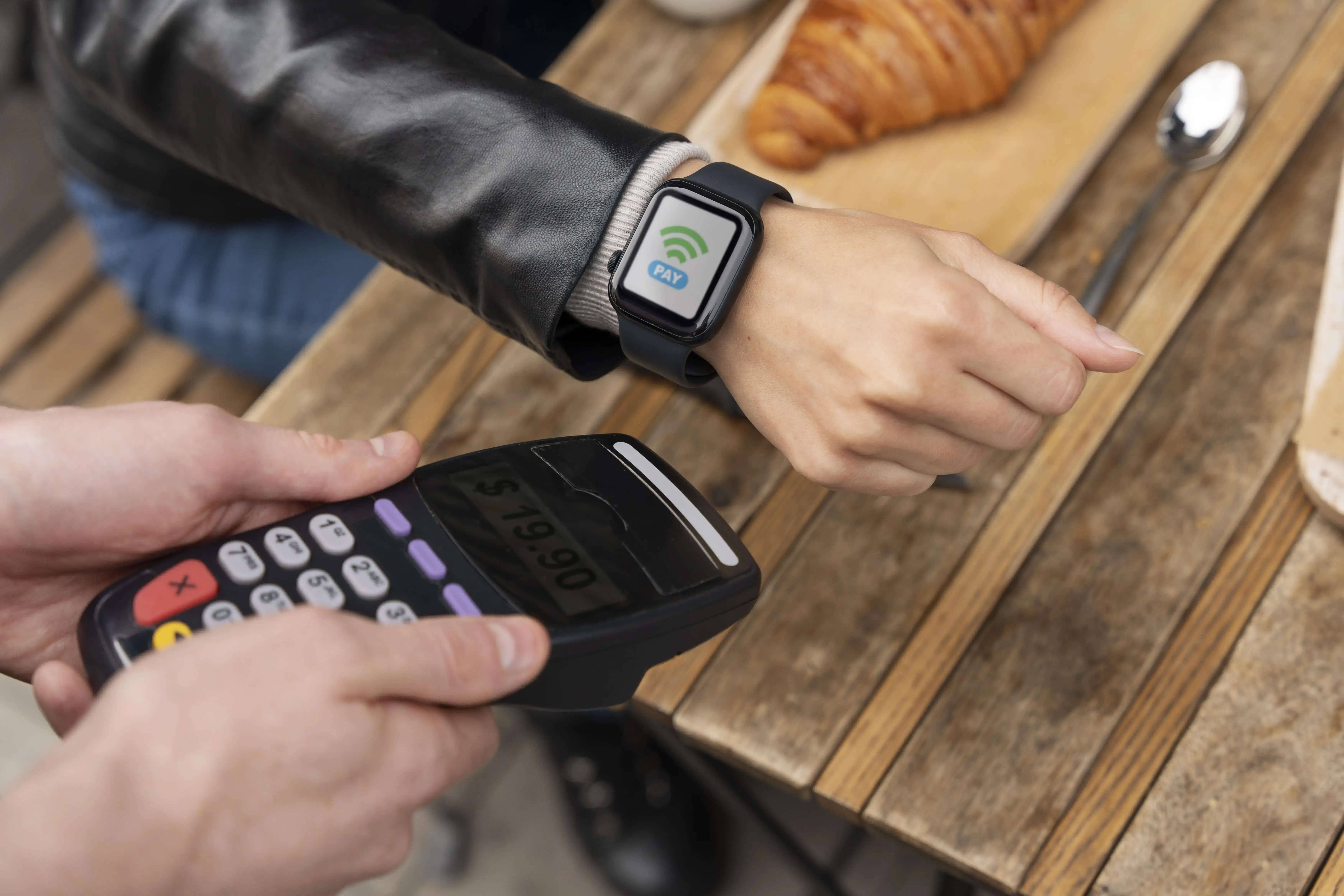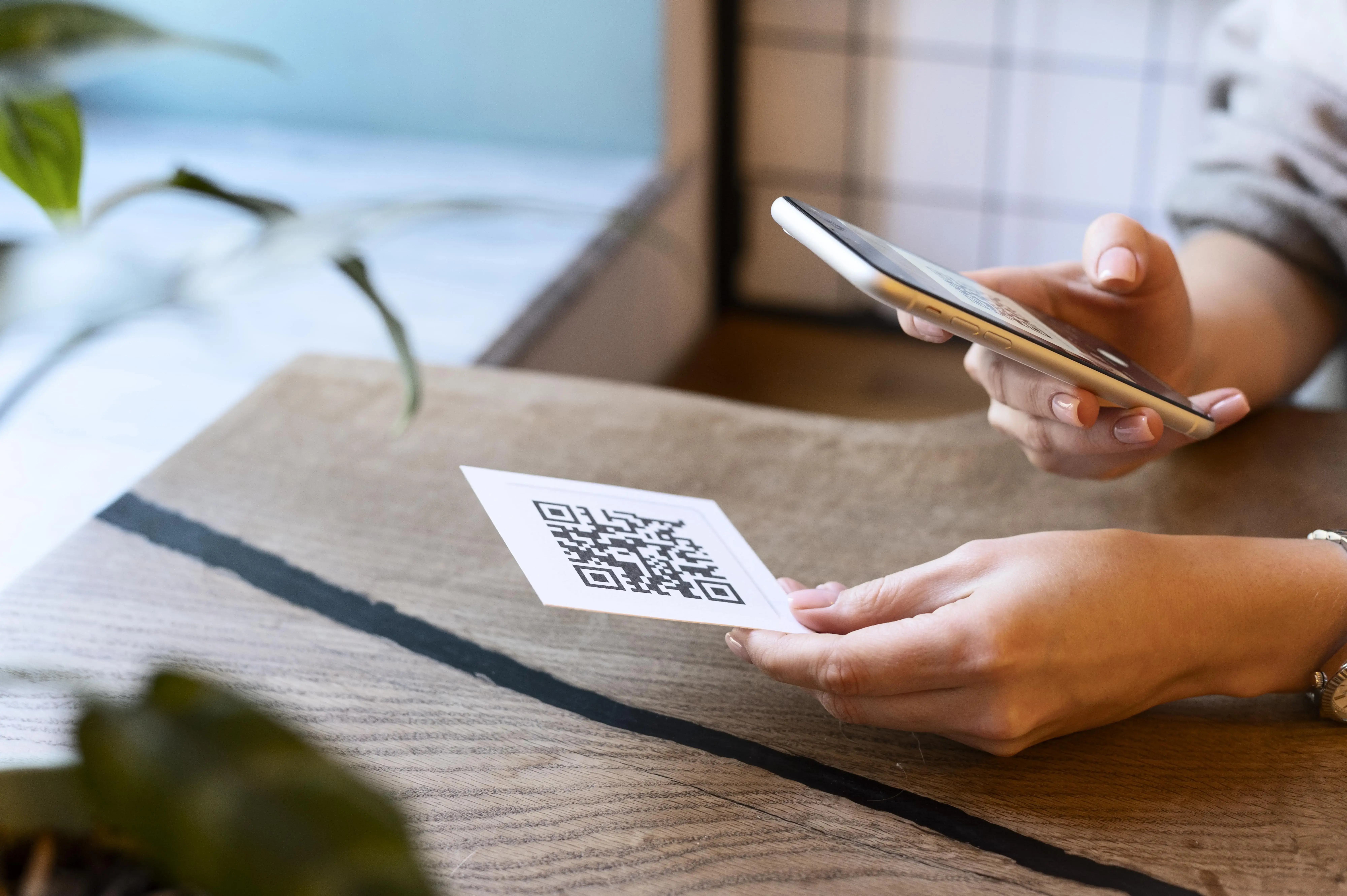Mobile Payments: Why Your Business Should Adapt in 2026
6 min
November 21, 2025
Author:
Roan Dollmann
.webp)

Introduction
People are using mobile payments now more than ever. In 2026, customers expect their phones to do all the work with just a tap, scan, or swipe. There are no cards, no delays, no friction
If your checkout flow doesn’t support that, you’re already a step behind.
In this article, we’ll explore what’s driving the rapid rise of mobile payments, why it matters for your business, and how to adapt your payment strategy to meet evolving customer expectations.
Did you know? According to Juniper Research, the number of mobile wallets in use will rise from 2.8 billion in 2020 to nearly 4.8 billion by 2026, representing more than half the world’s population
What Are Mobile Payments and Why Are They Dominating in 2026?
What Exactly Are Mobile Payments?
Mobile payments are transactions completed through smartphones or tablets, instead of physical cards or cash.
Whether it’s a quick tap using Apple Pay, a QR scan via UPI, or an in-app checkout with PayPal, these methods are designed for speed, convenience, and security.
They rely on NFC (near-field communication), QR codes, and biometric authentication to make the payment experience seamless, especially for customers who expect instant, touch-free transactions.
Want a broader overview of online payments? Check out our article What Are Online Payment Solutions? A Beginner’s Guide.
Why Mobile Payments Became the New Normal
The move to mobile payments wasn’t sudden, but the events of 2020 accelerated a lasting change. What started as a health-driven necessity quickly became a preferred way to pay. As of 2026, utilizing mobile wallets, scanning codes, or tapping phones will automatically be the norm.
What drives this shift? Speed, security, and simplicity. Mobile payments process instantly, offer built-in security, and work seamlessly whether you’re grabbing coffee in Berlin or booking services in Bangalore.
Behind the scenes, global infrastructures have caught up. Real-time payment systems like UPI in India, Pix in Brazil, and Wero in Europe have made instant mobile transactions the norm worldwide.
And it’s not just a regional thing. Across continents, mobile payment habits are shaping how business gets done:
Pro Tip: Your customers expect global-grade simplicity even if your business doesn’t sell globally.
Behavior & Preferences in 2026
By 2026, mobile payments have become invisible, seamless, and second nature. Customers think of them as the default. Mobile is how we order food, shop online, and settle after brunch. It’s quick, secure, and fits how people live now.
Here’s what modern consumers expect at checkout:
- Speed: They want to pay in one tap, not fill out five fields or wait for a receipt to print.
- Familiarity: QR codes, face ID, and tap-to-pay are second nature, used in vending machines, taxis, farmers’ markets, and everywhere in between.
- Flexibility: Customers want to choose their payment method, whether it’s Apple Pay, PayPal, Klarna, or a country-specific wallet like UPI or Bizum.
- Integrated rewards: Loyalty isn’t tied to a card on your keychain anymore. It’s built into mobile wallets, tracked automatically, and redeemed instantly.
Even expectations around receipts have shifted. Many prefer a digital receipt or text confirmation, not a crumpled paper slip. The entire experience is expected to be mobile-native and efficient.
How Mobile Payments Benefit Your Business
Incorporating mobile payments not only streamlines the checkout process, but it also changes the entire framework of your business. From cash flow to customer retention, mobile-first systems create a measurable impact across departments.
Understanding the benefits of mobile payments also means knowing how different payment methods affect your processing fees. Choosing the right pricing model can have a big impact on your bottom line.
How Mobile Payments Affect Your Processing Costs
Accepting mobile payments affects merchant fees, especially processing costs. Different methods like digital wallets, local options, and BNPL have varying interchange and processing fees.
For businesses with many mobile transactions, transparent pricing models like Interchange++ often lead to lower costs than blended pricing, especially since digital wallets and local methods usually have lower interchange fees.
Knowing these pricing differences helps you reduce costs and boost profitability.
To dive deeper into how pricing models affect your payments, check out our detailed guide: Interchange++ vs Blended Pricing: Which Saves You More in 2026.
How Is Technology Powering the Next Wave of Mobile Payments?
Interoperability and Advanced Payment Orchestration
In 2026, mobile payments encompass connectivity, intelligence, and speed.
Thanks to payment systems like UPI in India, Pix in Brazil, Swish in Sweden, and Wero across the EU, cross-border mobile transactions now happen in seconds, not days. This level of real-time interoperability was unthinkable a few years ago.
However, achieving this requires a payment platform built to handle such complexity seamlessly.
A modern payment orchestration engine routes each transaction through the optimal provider based on region, currency, and payment method and automatically switches to backups when needed. This intelligent approach reduces lost sales, boosts approval rates, and always ensures a frictionless checkout.
AI-Powered Security
With mobile transactions rising, fraud attempts follow close behind. That’s why modern payment systems rely on intelligent AI instead of fixed rules and prevent threats.
Smart fraud tools can now identify suspicious behavior in real time, flagging patterns across device types, locations, spending behavior, and more. But basic AI isn’t enough.
Dynamic fraud engines tailor their security logic to each transaction in real time, helping detect actual threats while minimizing false declines for legitimate customers.
Compliance Made Easy
2026 brings tougher GDPR-style regulations, demanding stronger consent, secure data handling, and transparent customer authentication. Alongside these benefits, failing to adapt risks blocked transactions, costly fines, and damaged customer trust.
That’s why PayFirmly is built to keep your business aligned with the latest rules.
Our platform meets PCI DSS Level 1 certification standards and supports PSD2-compliant authentication, including 3-D Secure 2 (3DS2) flows. This infrastructure ensures every transaction is secure, verified, and fully regulation-ready.
Emerging Payment Trends to Watch in 2026
Mobile payments are advancing quickly, with several key trends shaping the landscape:
- Buy Now, Pay Later (BNPL): Flexible, mobile-friendly financing is popular with younger shoppers.
- Tap-to-Pay & Wearables: Contactless payments via smartphones and smartwatches are becoming standard.

Did you know that the global wearable payment devices market was valued at $58 billion in 2024 and is projected to grow to nearly $149 billion by 2030, representing a 17% compound annual growth rate, driven by demand for faster, contactless, and convenient transactions
- Biometric Security: Fingerprint and facial recognition strengthen digital wallet safety.
- AI-Powered Personalization: Enhances loyalty rewards and checkout experience through customer data insights.
- Subscription Growth: Recurring billing models rely on seamless mobile payment integration.
- Self-Service Kiosks: Automated checkouts increasingly use mobile wallets for fast, contactless payments.
Staying competitive means supporting all these use cases through one flexible, mobile-ready payment stack, built to evolve with customer expectations.
How Can Your Business Easily Adapt to Mobile Payments in 2026?
Simple Step-by-Step
Adapting to mobile payments doesn’t mean a costly or confusing overhaul. Instead, it’s about smart, focused moves that bring modern convenience to your customers and efficiency to your team.
Let’s break down each step:
- Upgrade to contactless terminals or enable QR codes
Contactless payments have gone mainstream because they’re fast, hygienic, and intuitive. For physical locations, enable NFC terminals that support tap-to-pay from phones and wearables. For mobile or pop-up setups, QR codes offer a cost-effective alternative. Customers simply scan and pay, and no app is required.

You don’t even need a website to accept mobile payments. FirmEU’s guide on accepting online payments without a site shows how simple payment links and QR codes can turn a social or marketplace listing into a paying checkout.
- Enable major mobile wallets
Make sure your checkout supports popular wallets like Apple Pay, Google Pay, and region-specific options such as UPI in India or Bizum in Spain. Customers expect frictionless, native payment methods, and offering them can directly reduce abandonment.
- Automate security and fraud detection
Use a payment system that handles tokenization, encryption, and real-time fraud screening automatically. Advanced tools now assess risk per transaction, minimizing false declines without manual review.
- Embed loyalty directly in the payment flow
Mobile payments unlock powerful opportunities for customer engagement. Embedding loyalty programs and rewards directly into the payment flow helps boost repeat purchase rates.
- Stay updated on compliance
Regulations like GDPR, PSD2, and local data protection laws are evolving fast. Choose infrastructure that updates compliance protocols automatically, especially if you operate in multiple regions.
Pro Tip: The fastest way to future-proof your business is to choose a payment provider that handles everything, from payment methods to security to compliance, in one place.
Are There Any Risks to Mobile Payments and How Can You Avoid Them?
The Risks
Mobile payments have transformed commerce, but they come with challenges businesses need to address thoughtfully. Understanding these risks is key to managing them effectively.
1. Data Security Concerns
Despite advances in payment security, many consumers remain wary about sharing sensitive information via mobile devices. High-profile data breaches and phishing scams have heightened fears around:
- Personal data theft: Customers worry that their card details, identity, or purchase history could be compromised.
- App and network vulnerabilities: Unsecured Wi-Fi networks or malicious apps can expose payment data.
- Lack of transparency: Customers want clear information on how their data is stored and protected.
Businesses must not only implement robust security but also communicate these measures clearly to build trust.
2. Customer Payment Preferences
Even as mobile payments grow, a significant segment of consumers still rely on traditional payment methods:
- Cash remains king: In many regions and demographics, cash is preferred for privacy, habit, or lack of technology access.
- Card payments are still common: Some customers feel more comfortable with physical cards or manual entry.
- Digital divide: Not everyone has access to smartphones or reliable internet, limiting mobile payment adoption.
Offering hybrid payment options helps businesses serve a broader audience and avoid losing sales.
3. Regulatory Complexity
Payment regulations are evolving rapidly and vary by region, industry, and transaction type:
- Data protection laws: GDPR in Europe, CCPA in California, and similar laws worldwide impose strict controls on data handling.
- Authentication requirements: PSD2’s Strong Customer Authentication (SCA) mandates extra verification for European transactions.
- Industry-specific rules: Financial services, healthcare, and government sectors face additional compliance demands.
- Cross-border challenges: Different countries have varying rules on currency exchange, transaction limits, and reporting.
Failing to comply can lead to fines, chargebacks, or blocked transactions, making compliance a critical operational priority.
4. Fraud and Chargebacks
Mobile payments are a target for fraudsters due to their digital nature and rapid transaction flow. Risks include:
- Identity theft and account takeover: Fraudsters impersonate legitimate customers to make unauthorized payments.
- Friendly fraud: Customers dispute legitimate charges to get refunds unfairly.
- Phishing and social engineering: Scammers trick customers into revealing payment credentials.
Preventing fraud requires intelligent tools, continuous monitoring, and swift response mechanisms.
How PayFirmly Keeps You Compliant and Mobile-Ready
Addressing the risks of mobile payments requires smart tools and flexible strategies, and that’s exactly what PayFirmly delivers.
Real-Time Fraud Detection + Tokenization:
PayFirmly is a next-generation payment orchestration platform. That means it doesn’t just process transactions. It actively manages every part of your payment stack, including routing, fraud screening, compliance, and performance optimization, all handled automatically and intelligently.
Behind the scenes, an AI-powered fraud engine evaluates every transaction in milliseconds using live behavioral signals like device fingerprinting, velocity patterns, and geolocation.
- Built-In Hybrid Checkout Options:
No two customers pay the same way. PayFirmly lets merchants offer mobile wallets, QR code payments, manual card entry, and even regional options like UPI in India, all through one interface.
You can customize the payment flow per channel or market without juggling multiple integrations.
For instance, a subscription brand operating in Europe and India can offer Apple Pay and SEPA in one region, and UPI or Google Pay in another, ensuring high approval rates and a consistent user experience globally.
- Automated Compliance & Platform Updates
Staying ahead of regulations like GDPR, PSD2, and PCI DSS is non-negotiable, but it shouldn’t consume your team’s time. PayFirmly handles these updates in the background.
The platform is PCI DSS Level 1 certified, and all sensitive transactions are processed through secure, compliant infrastructure.
Merchants receive updates and policy changes through the dashboard, not buried in documentation or requiring manual implementation. You stay audit-ready without lifting a finger.
- Risk-Tolerant Infrastructure for High-Stakes Transactions
For high-risk verticals like supplements, financial services, or adult content, PayFirmly uses intelligent routing. This ensures transactions go through PSPs most likely to approve them. As a result, false declines are reduced, and your reputation with acquiring banks is protected.
And when a chargeback happens? You’ll have access to dispute resolution support with detailed data logs and risk insights that help you win more cases, faster.
Measuring Mobile Payment Success
As mobile payment adoption continues to rise, businesses need to track the right Key Performance Indicators (KPIs).
Metrics such as Transaction Success Rate, Payment Failure Rate, and Authorization Rates provide valuable insights into your mobile payment strategy's effectiveness. Here's why these KPIs matter:
- Transaction Success Rate (Conversion Rate) measures the percentage of successful mobile payments. Higher rates mean smoother checkout and more sales.
- Payment Failure Rate of failed transactions due to glitches or fraud checks. High rates signal issues needing fix.
- Authorization Rates reflect the percentage of payments approved on the first attempt. Low rates may frustrate customers and reduce revenue.
By closely monitoring these KPIs, you can quickly identify and address bottlenecks within your checkout process, proactively optimize payment routes, enhance user experience, and ultimately, boost conversions and long-term customer loyalty.
Final Takeaways: Why Mobile Payments Are No Longer Optional
To sum it up, here are the key reasons why embracing mobile payments is critical for your business success in 2026 and what each means for your growth strategy:
Embracing mobile payments doesn’t mean adding complexity or risk. It means unlocking new revenue channels while keeping your customers happy and secure.
The smartest approach? Partner with a platform designed to simplify payments from start to finish.
PayFirmly’s payment orchestration platform powers your checkout with smart routing, built-in fraud defenses, and seamless access to hundreds of payment methods, helping you grow globally without sacrificing security or speed.
Secure Crypto Payment Orchestration & Processor with PayFirmly
The future of adult payment processing is intelligent, compliant, and built around you.
Join leading adult brands using PayFirmly to boost approvals, cut fees, and simplify multi-processor management — all from one secure dashboard.






